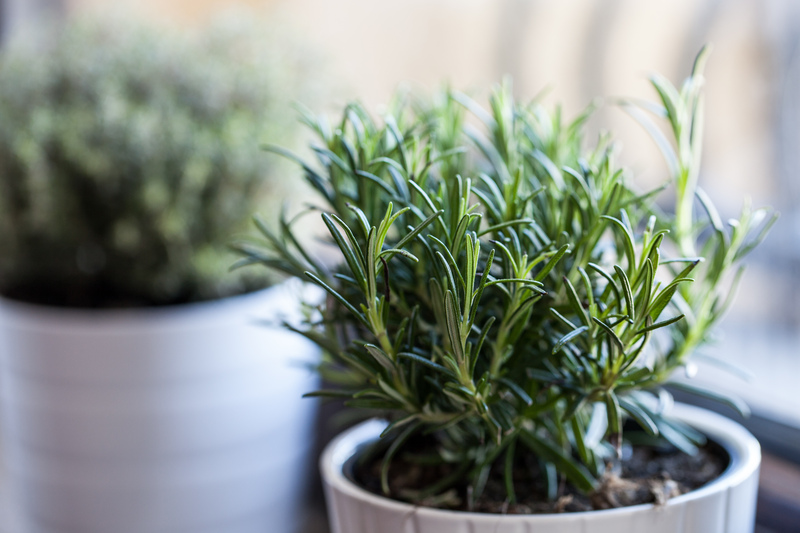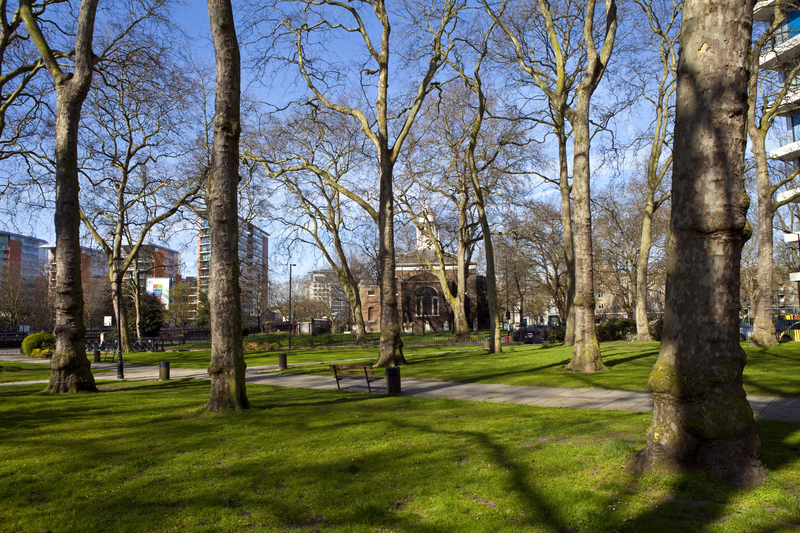Gardening for a Better Planet: Tackling Climate Change Head-On
Posted on 30/06/2025
Gardening for a Better Planet: Tackling Climate Change Head-On
Climate change is one of the most pressing challenges of our era, affecting every corner of the globe. While large-scale policy and innovation are required, every individual can contribute with practical solutions--and gardening is an impactful, accessible way to do just that. This comprehensive, SEO-optimized guide explores how gardening for a better planet is both a personal joy and a powerful tool for tackling climate change head-on.
Why Gardening Matters in the Fight Against Climate Change
Gardening is often considered a leisure activity, but its benefits extend far beyond personal relaxation or aesthetics. Sustainable gardening practices can substantially reduce your carbon footprint, enhance biodiversity, and build ecosystem resilience. By choosing to garden with the environment in mind, individuals become part of a larger movement dedicated to healing the Earth.
The Environmental Impacts of Traditional Landscaping
Traditional, resource-intensive landscaping commonly features high-maintenance lawns, gas-powered equipment, and chemical treatments. These approaches consume large amounts of water and fossil fuels while releasing greenhouse gases and harmful chemicals into the environment.
- Gas-powered lawn mowers alone account for about 5% of urban air pollution in the U.S.
- Chemical fertilizers and pesticides undermine soil health and water quality.
- Non-native plants often require more resources, leading to greater environmental stress.
By contrast, climate-conscious gardening practices are low-impact, restorative, and regenerative.

How Gardening Helps Combat Climate Change
Gardening for a better planet is rooted in the science of carbon cycling, ecosystem restoration, and sustainable land management. Here's how mindful gardening can make a direct difference:
1. Carbon Sequestration
Plants absorb carbon dioxide (CO2) during photosynthesis, storing it in their stems, leaves, and roots. Soil health further enhances carbon capture. Building up organic matter in the soil keeps carbon out of the atmosphere and mitigates climate change.
- Trees and woody shrubs store more carbon than annual plants.
- Compost, mulch, and no-till gardening increase soil organic matter.
- Promoting healthy root systems locks in long-term carbon stores.
2. Supporting Biodiversity
A diverse, native-friendly garden attracts pollinators, birds, and beneficial insects. This results in more resilient local ecosystems that are better equipped to handle the unpredictable impacts of climate change, such as extreme weather or shifting pest populations.
3. Reducing Waste and Pollution
- Composting reduces landfill waste--organics in landfills produce methane, a potent greenhouse gas.
- Avoiding synthetic fertilizers and pesticides protects air, water, and soil quality.
Eco-friendly gardening methods directly reduce household carbon emissions and resource dependence.
4. Water Conservation Benefits
Climate-oriented gardening uses drought-tolerant plants, drip irrigation, and rainwater harvesting. This lowers fresh water usage, a critical consideration as climate change increases drought frequency around the world.
- Mulch limits evaporation and keeps soil cool.
- Rain gardens and permeable surfaces reduce runoff and recharge groundwater.
Climate-Smart Gardening: Best Practices
Shifting your gardening routine towards sustainability doesn't require a complete overhaul. Many climate-resilient gardening practices are simple to implement and highly effective. Here are some proven strategies:
Choose Native and Drought-Resistant Plants
Native plants are adapted to local conditions, requiring less water, fertilizer, and maintenance. They support local wildlife and provide food and habitat for pollinators. Drought-tolerant choices ensure your garden thrives, even in extreme weather.
- Research local plant species suitable for your climate zone.
- Mix perennials, shrubs, and trees for year-round benefits.
Practice No-Till or Low-Till Gardening
Tilling releases stored carbon from the soil into the air and damages soil structure. No-till methods use mulch and cover crops to suppress weeds, retain moisture, and enrich the topsoil--all while trapping more carbon.
Mulch and Compost for Healthy Soil
Mulching with organic materials (leaves, straw, wood chips) retains moisture and gradually improves soil quality. Composting food and yard waste returns essential nutrients to the earth and supports the soil's natural ability to store carbon.
- Use compost bins or pile organic debris in tucked-away garden corners.
- Spread a thick blanket of mulch around plants to suppress weeds and feed the soil.
Water Wisely
Install rain barrels to capture roof runoff and use drip irrigation systems to deliver water directly to the roots of plants. Water early morning or late afternoon to minimize evaporation and maximize uptake.
- Create rain gardens or bioswales in low areas to capture and filter stormwater naturally.
Create Wildlife Habitats
Plant hedges, wildflower meadows, and native grasses to attract birds, bees, butterflies, and other pollinators. Avoid pesticides that harm beneficial insects. Provide fresh water, shelter, and nesting materials.
Grow Your Own Food--Sustainably
Home-grown vegetables, herbs, and fruits don't require long-distance transport or plastic packaging. Expand your edible garden, swap seeds with friends, and prioritize heirloom and organic varieties.
- Use crop rotation to enhance soil health and reduce pest buildup.
- Embrace polyculture--growing many different crops together for natural pest control and yield stability.
Reduce Fossil Fuel Dependence
Choose manual or electric tools over gas-powered ones. Electric mowers emit fewer greenhouse gases and are quieter, creating a healthier atmosphere for both people and wildlife.
Innovative Gardening Ideas for a Greener Planet
Gardening for climate action inspires creativity and community collaboration. Consider these forward-thinking gardening concepts to take your impact to the next level:
Vertical and Rooftop Gardens
If ground space is limited, go up! Vertical gardens use stacked planters, trellises, or living walls to fit more greenery into urban spaces. Rooftop gardens insulate buildings, absorb rainwater, and help lower city temperatures through the urban heat island effect.
Community Gardens and Urban Agriculture
Community gardens transform vacant lots into productive green spaces that provide fresh food, foster social ties, and increase neighborhood resilience to heat and flooding.
- Organize seed swaps or group composting sessions for local impact.
- Engage schools and organizations to educate and inspire the next generation of climate stewards.
Permaculture Design
Permaculture is a holistic gardening philosophy that mimics natural systems to produce abundance with minimal inputs. It emphasizes the interconnection of plants, animals, water, and people for self-sustaining landscapes.
- Utilize companion planting and natural pest control methods.
- Design your garden to harvest sun, shade, and water efficiently.
Worm Farming and Vermicomposting
Worms are nature's recyclers! Start a worm bin to transform kitchen scraps into nutrient-rich castings for your garden, reducing both landfill waste and the need for synthetic fertilizer.
Gardening for a Better Planet: Success Stories
Across the globe, individuals and communities have reimagined gardens as engines for positive change. Here are a few inspiring examples:
- The Incredible Edible Project in Todmorden, UK, turned public spaces into edible landscapes, supplying free food while educating citizens about sustainable growing practices.
- Detroit's Urban Agriculture movement repurposed vacant lots into community-powered farms, improving food security and revitalizing neighborhoods.
- Native Plant Restoration projects in Australia and California have restored critical wildlife habitats, increased fire resilience, and reduced water needs.
These initiatives prove that gardening for climate action is both scalable and transformative.
Overcoming Barriers: Common Questions about Climate-Friendly Gardening
Is gardening for climate change really effective?
Yes! When multiplied across millions of gardens worldwide, even small changes add up, boosting carbon storage and biodiversity. By advocating for sustainable gardening, you also inspire friends, family, and communities to participate.
What if I only have a balcony or tiny yard?
Container gardening, vertical gardens, and microgreens growing are all excellent options. Every plant counts!
I'm new to gardening--where do I start?
- Start small with an easy-care plant or native flower bed.
- Reach out to local gardening clubs, extension services, or online communities for advice.

Gardening for a Better Planet: Tips for Maximum Impact
- Observe and learn from nature before planting anything.
- Practice patience--soil health, wildlife populations, and climate resilience build gradually over time.
- Share your successes and challenges to encourage spread of sustainable techniques.
- Keep learning! Gardening for a better planet is a journey, not a destination.
Conclusion: Every Garden Makes a Difference
In the face of a rapidly warming world, every plant, patch, and plot counts. When we choose to garden for a better planet, we don't just grow flowers or food--we cultivate hope, resilience, and measurable change. Whether you tend a window box or transform an entire backyard, your actions have a ripple effect on the climate and the community.
By shifting toward climate-friendly gardening practices, you'll enjoy healthier soil, more abundant wildlife, and a greener world for future generations. Join the movement: take up your trowel, plant sustainably, and tackle climate change head-on from your own home.
Further Reading and Resources
- EPA Greenscapes: Tips for environmentally friendly landscaping.
- Royal Horticultural Society: Gardening and Climate Change
- The Nature Conservancy: Urban Gardens and Climate
- Permies: A community forum on permaculture and sustainable gardening.
Start gardening for a better planet today, and be part of the solution to climate change--one plant at a time!

